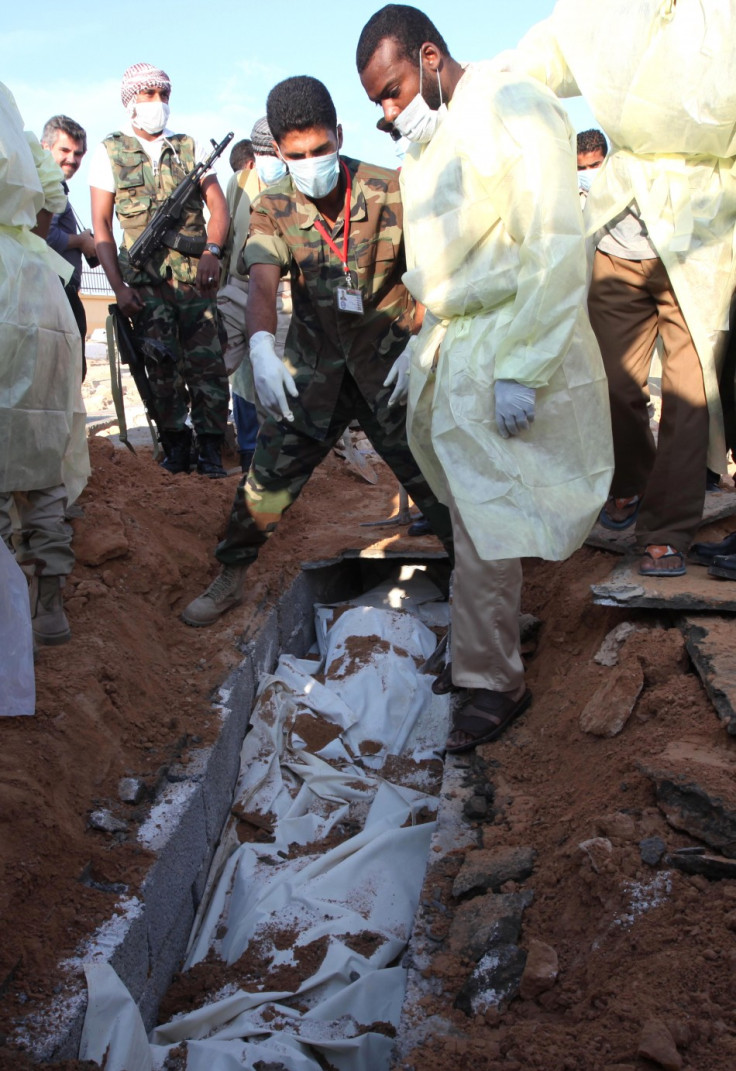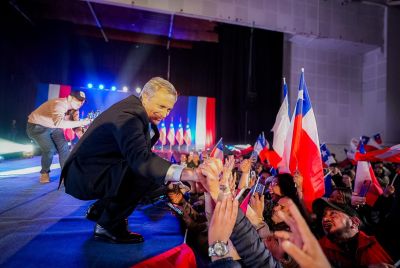Gaddafi Followers 'Executed' in Sirte: Libya and the Dirty Face of the ‘Liberation'

Libya might have now been 'liberated' but the consequences of nine months of conflict between the anti and pro Gaddafi forces might take much longer to heal as the 53 bodies of apparent Gaddafi loyalists who appeared to have been executed were found by Human Rights Watch (HRW).
The rights organisation claims to have found up to 53 bodies, likely to be those of Gaddafi supporters, in the Mahari hotel in Sirte.
The area in the District 2 of Sirte, was understood to be under the control of NTC fighters originating from Misrata, who had taken control of the building before the killings took place.
Following the findings, Human rights watch has now called for the NTC to launch an immediate and transparent investigation into the apparent mass execution in order to bring those responsible to justice.
"We found 53 decomposing bodies, apparently Gaddafi supporters, at an abandoned hotel in Sirte, and some had their hands bound behind their backs when they were shot," said Peter Bouckaert, emergencies director at Human Rights Watch, who investigated the killings.
"This requires the immediate attention of the Libyan authorities to investigate what happened and hold accountable those responsible."
In a statement, the organisation also said: "If the NTC fails to investigate this crime it will signal that those who fought against Gaddafi can do anything without fear of prosecution."
"The bodies were clustered together, apparently where they had been killed, on the grass in the sea-view garden of the hotel," the statement also reads.
The news came as an AFP reporter said he had found 60 corpses on the lawn of the Al-Mahari hospital at the week end.
Many of the victims looked like they had been executed with a bullet to the head, according to the reporter.
However when questioned, NTC fighters told AFP that the hospital had been used as a makeshift prison by Gaddafi's men who, they said, were responsible for the executions, but left the hospital soon after.
Similar cases were reported in Tripoli, after the NTC forces had taken control of the capital and in August Gaddafi forces were then also blamed for the killing of 50 people.
Human Rights Watch has however warned that the Sirte killings likely took place a week before the bodies were discovered and Gaddafi supporters are among the casualties.
"Those preparing the bodies said they believed most of the victims were residents of Sirte, some of them Gaddafi supporters. They said that some of the victims had most likely tried to flee from District 2, the last stronghold of Gaddafi loyalists as anti-Gaddafi forces attacked the city. Other victims were possibly released from Ibn Sina Hospital in Sirte, they said, after being treated for conflict-related injuries."
Several anti Gaddafi brigades from Misrata could have been implicated in the killings, HRW implied as "The Hotel Mahari was apparently in the hands of anti-Gaddafi forces from Misrata before the killings, and it remained in their control until the fighting in Sirte stopped on October 20."
Moreover the organisation said it found graffiti on the walls that showed the names of five Misrata-based groups.
Other atrocities reported by HRW include another 10 decaying bodies found at another site, also in Sirte, however this time, the rights group was not able to determine the identity of the victims.
Also, according to medical officials, the Pro-Gaddafi forces have carried out execution in the city.
In addition, HRW said it found the "remains of at least 95 people" who apparently died on the same day Gaddafi was captured, and up to six bodies presented execution-style signs, such as "gunshot wounds to the head and body."
"This latest massacre seems part of a trend of killings, looting, and other abuses committed by armed anti-Gaddafi fighters who consider themselves above the law," Bouckaert said.
"It is imperative that the transitional authorities take action to rein in these groups."
The news comes as Gaddafi's death has been surrounded by controversy. The leader was first captured alive but was later shot in the head and announced dead.
While earlier reports from NTC leaders indicated he had been killed in crossfire while en route to hospital, footages of him being kicked by the Libyan fighters and photos of a soldier pointing a gun at him have raised questions.
Following the death of Gaddafi, a man also told the press he had killed the former leader, and his account was corroborated by witnesses.
Gaddafi's son, Mutassim, also killed last week was apparently alive when captured but died within hours, leaving many to think that both father and son had been executed by the anti Gaddafi fighters.
While the NTC leaders have emphasised on the need for reconciliation throughout the transitional phase to heal the rifts dividing the Libyan population, horrors committed during the war by both camps will be hard to forget.
The latest HRW revelations are set to put the NTC and the members of the soon to be formed new transitional government in a difficult position.
Many of the forces that fought for the NTC still have their weapons and expect to be rewarded rather than prosecuted, so bringing the 'Libyan fighter' to court could lead to further insurgency.
Gaddafi might be gone, but none of the new leaders have yet been officially elected by the Libyans so the political situation is still volatile.
More than just a conflict, the last nine months have plunged the country into a civil war, leading to Libyans killing fellow Libyans and as in any war atrocities have been committed.
While the Gaddafi camp has already been accused of committing war crimes, by the International Criminal Court and various rights organisations, after 'liberating' Libya, the NTC will now have to lift the veil on the horror committed from the fighters of its own camp, but risks facing an internal backlash, making it even more difficult to balance international and domestic expectations.
© Copyright IBTimes 2025. All rights reserved.





















